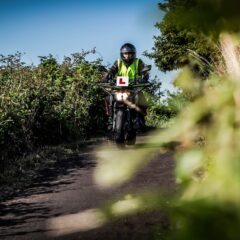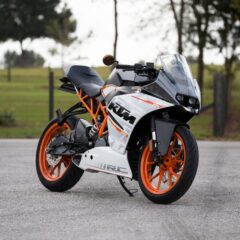
7 Top Motorcycle Accessories
With Christmas just around the corner, you might be wondering what to get your favourite motorcycle enthusiast or even a little something for yoursel...
 Phoenix Motorcycle Training LTD
Phoenix Motorcycle Training LTD
 Phoenix Motorcycle Training LTD
Phoenix Motorcycle Training LTD

Once you learn a new skill and certain actions become second nature, it’s easy to become complacent. But riding a motorcycle means making a commitment to continual training. Not only to keep improving but to keep your skills sharp.
Riding a motorcycle and training doesn’t have to be separate. In fact, it’s better if they’re not. Track days are one way to do this, but they’re not the only way to improve without taking an advanced rider course. Practice exercises combine motorcycle riding and training – without a structured course. Making time for practice exercises in quiet tarmacked areas, or consciously practising techniques in traffic will keep you on top of your two-wheeled game.
The following motorcycle training exercises are great to revisit regularly. It’s easy to develop bad habits or get into a riding rut. These motorcycling exercises will help you guard against complacency or developing lazy techniques.
Ever heard of the forgetting curve? It’s most noticeable when you’re learning something new. But we all forget things over time. Although you may remember the core elements, the little bits of finesse for a riding technique can easily get lost.
The biggest drop in retaining what we’ve learned happens soon after we’ve learned it. Within a few hours of learning something new, around 50% will be forgotten. Give it a few more days and another 20% disappears in the mists of your mind.
As days turn into weeks, and weeks into months, more gets forgotten. That’s why it’s so important to actively re-learn and reinforce the things you’ve learned about riding a motorcycle and training regularly to do so.
Consciously practising helps to embed knowledge. It’s a technique athletes use and something you can do to stay sharp on your motorbike. Completing regular training exercises is just as important as consciously practising technique. It stops all those finer points of motorcycling from getting lost.
In our earlier blog about the 4-step turning technique, we included three motorcycle exercises for you to carry on your training with. The exercises below can be added to your motorcycle turning technique training list.
Correct anchoring is a must if you have ambitions of ever ‘getting your knee down’ in a curve. This motorcycle exercise will help you with your steering technique, and it’ll make additional training for getting your knee down on track days a whole lot easier.
To increase your clearance in a curve, you need to move your seating position inward to the curve. This helps you to firmly anchor your outward knee and thigh against the tank of your bike. Move your position like this well ahead of the curve. Notice how well anchored you are and keep that position as you move through the curve. After completing the curve, gradually move your weight from the outward peg to the inward peg, slightly lifting your body as you do so. Make sure you don’t pull on the handlebars.
Our earlier blog about braking techniques also included several exercises to help you improve the control of your machine. The motorcycle braking exercises below build on these small training exercises.
Choose a familiar curve on a dry day. Brake carefully with the front brake from a speed you are comfortable with. Notice how your motorcycle behaves; trying to stand up and steer straight ahead. Steering becomes heavy and reluctant.
After getting familiar with this reaction after a few repeated attempts, try counteracting this tendency with countersteering. This will help your motorcycle follow your intended course through the curve. Keep practising until you are able to find the correct balance between braking pressure and steering commands.
It’s a skill you need to know in an emergency situation. Braking and swerving relies on honed technique and the best way to develop that is in a traffic-free tarmacked area. Getting this down to a working habit could save your life. Regularly repeating this exercise on deserted roads will keep your motorcycle skill sharp.
Choose a point on the tarmac as your ‘swerve obstacle’. A repaired piece of asphalt works well. Brake carefully on the approach and then release the brake softly. Adopt your anchored push position and give a light steering command while being aware of your throttle control. Immediately straighten your bike with a second anchored push in the opposite direction to straighten up and return to your original course.
Conscious anchoring is important in this exercise as it allows your steering command to be precise and for you to follow up with throttle control. Gradually increase the force of your swerve and the quickness of the manoeuvre.
This motorcycle training exercise can also be used for practising emergency braking with a swerve. To do this, choose an area with no traffic and lots of space.
Taking time to revisit motorcycle techniques and training will keep your skills sharp. We all naturally lose our skills over time if we don’t actively work to maintain them. This is as true of riding a motorcycle as it is of any other skill you may have developed.
Make time to practise your motorcycle technique. Do this every time you ride by consciously working through the manoeuvres you’ve planned. Also eking out time regularly to practise techniques that are better honed away from other road users is a great idea.
Your motorcycling skill, and how well you retain it, is completely up to you. If you tend to leave your motorcycle at home in the cooler months, we’d recommend making time to sharpen your skills again once finer days return. Certainly, take time to practise before you set off on a long ride with a group of friends! If you’d like to refresh your skills with feedback, consider our ProSkills Road course. It’s an introduction to furthering your motorcycling skills and mastering the dark arts of motorcycling.

With Christmas just around the corner, you might be wondering what to get your favourite motorcycle enthusiast or even a little something for yoursel...

If you love motorcycle riding, you’ve probably daydreamed about riding a motorbike for a living. A professional racer or stunt rider is OK for some...

Getting a UK motorcycle licence can seem a complicated process. Particularly when compared to a driving licence for a car. Whether you choose the pro...
This website uses cookies to personalise content, ads, and analyse traffic, sharing data with partners who may combine it with other information. See our Privacy Policy for more information.